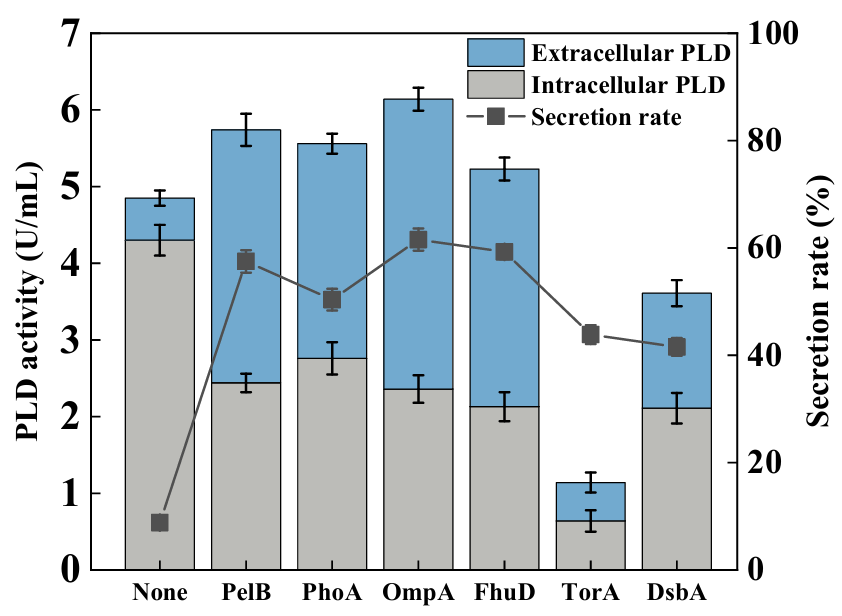Found 52 results
Open Access
Article
30 June 2025Hydrodynamic Analysis of Offshore Floating Photovoltaic Structure with Elastic Connection
Offshore Floating Photovoltaic structure (OFPV) represents a promising solar energy technology characterized by high conversion efficiency and suitability for large-scale deployment. However, the safety and economic synergy problems of floating structures restrict the industrialization and large-scale development of OFPV. We propose a novel OFPV with elastic connection and modularizable HDPE float blocks. The numerical wave tank is established by the turbulence model in FLOE-3D, based on the Navier-Stokes equations. Hydrodynamic analysis of the OFPV is conducted by using the Generalized Mode-Order (GMO) approach. Furthermore, the dynamic responses and mooring loads of the OFPV with elastic and rigid connections are compared. The results show that the average pressure of the photovoltaic support structure with the elastic connection is positively correlated with the wave height. The tension value of the elastic cable is higher at the outermost peak tension. The OFPV with the elastic connection structure has more obvious advantages in extreme wave state conditions than the rigid connection. This study provides theoretical support for the design and engineering application of OFPV.
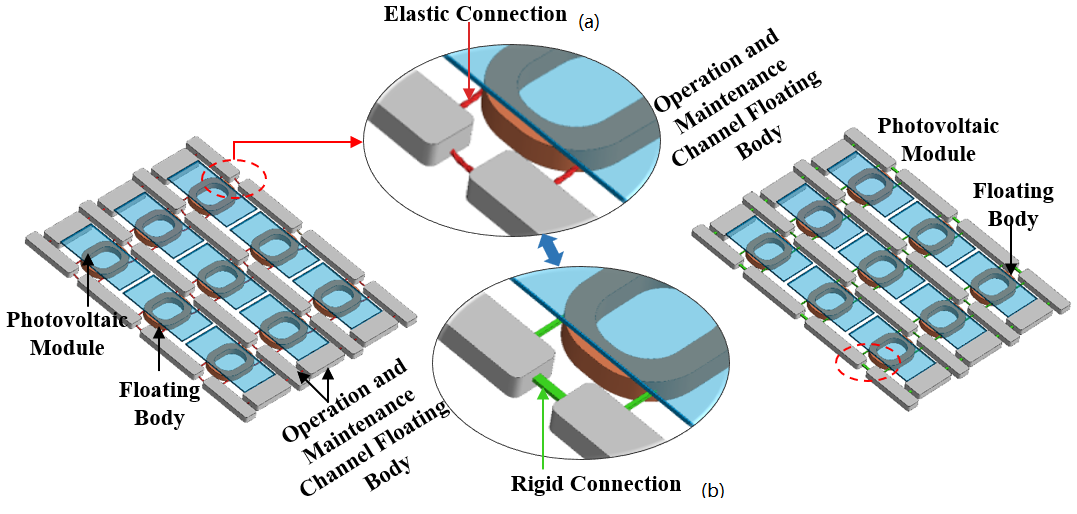
Open Access
Review
27 June 2025Targeting Collagen Secretion as a Potential Therapeutic Strategy to Modulate Fibrosis
Fibrotic diseases are driven by the excessive accumulation of extracellular matrix (ECM), particularly collagens, leading to progressive tissue stiffness and organ dysfunction. While many factors contribute to fibrosis—including cytokine signaling, integrin-mediated mechanotransduction, and altered ECM degradation—the synthesis and secretion of collagen remain central bottlenecks. Collagen biosynthesis is a complex process involving extensive post-translational modification and intracellular trafficking. The export of procollagen from the endoplasmic reticulum (ER) requires Transport and Golgi Organisation 1 (TANGO1), a transmembrane organizer of ER exit sites that coordinates cargo selection, membrane remodeling, and connectivity between the ER and the ER-Golgi-Intermediate-Comaprtment (ERGIC). By assembling into ring-like structures at ER exit sites, TANGO1 builds a secretory route for bulky cargoes that bypasses conventional vesicle constraints. Loss of TANGO1 disrupts collagen secretion and causes developmental defects across various species. In fibrotic tissues, TANGO1 expression is upregulated, linking secretory machinery to pathological matrix deposition. Recent work has identified specific interfaces within the complex of TANGO1 with its vertebrate paralogue Cutaneous T-cell lymphoma-associated antigen 5 (cTAGE5) as targets for cell-permeant peptide inhibitors. Inhibitors that selectively and specifically block TANGO1 complex formation reduce collagen secretion in fibroblasts and scar formation in vivo, offering a new strategy to modulate fibrotic processes.
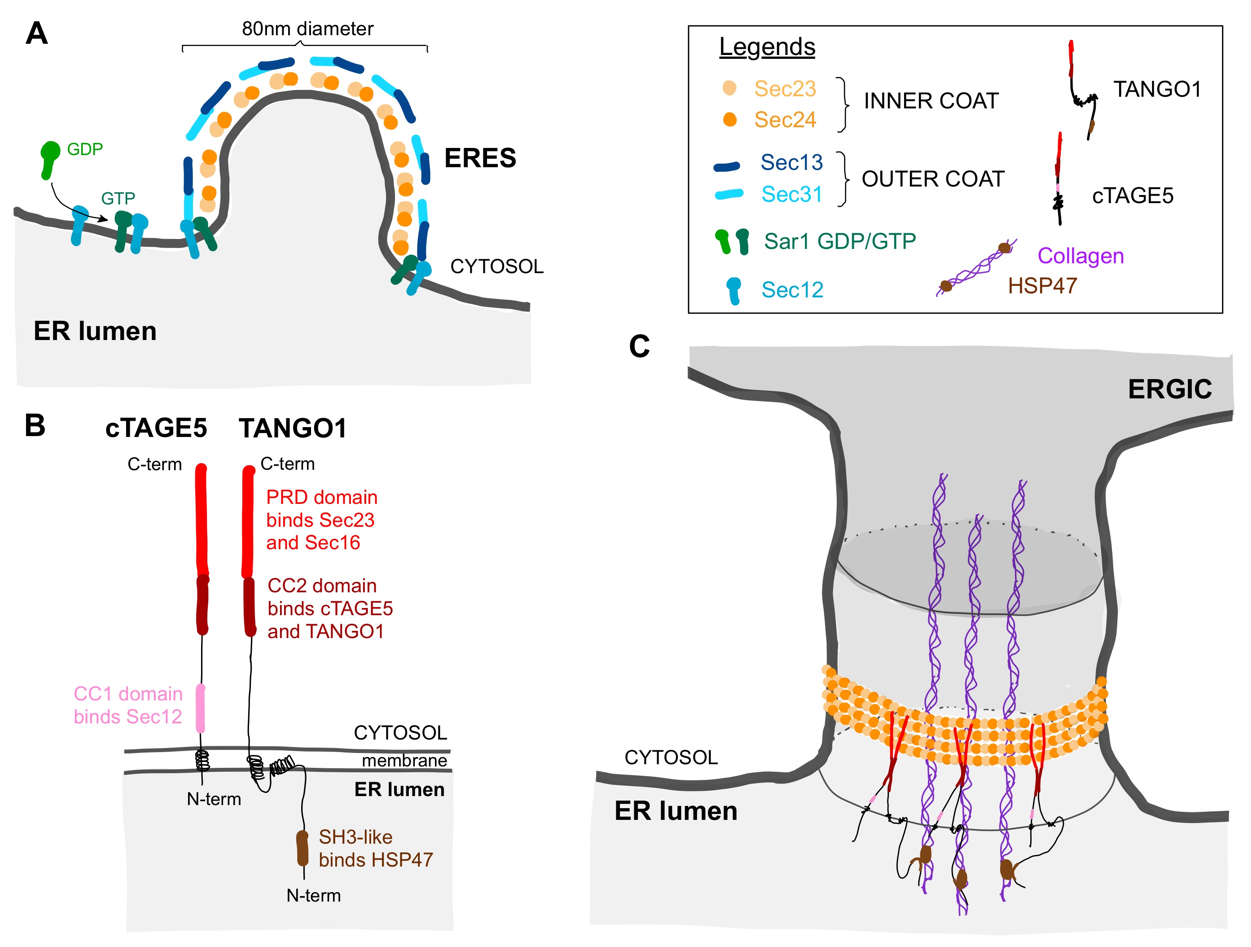
Open Access
Communication
26 June 2025Production and Calibration of a Lambertian Surface Based on Barium Sulfate (BaSO4) for the Calibration of Multispectral Cameras
Drones, or unmanned aerial vehicles (UAVs), are increasingly utilized across diverse fields such as agriculture, environmental analysis, and engineering due to their ability to capture high-quality multispectral imagery. To ensure the accuracy of these images, radiometric calibration of onboard multispectral cameras is essential. This study aimed to develop and calibrate a low-cost Lambertian surface using barium sulfate (BaSO4) for radiometric calibration of UAV-mounted multispectral cameras. A stainless steel mold was designed to compact BaSO4, and the resulting surface was calibrated using an ASD FieldSpec HandHeld UV/NIR spectroradiometer and a Spectralon plate as the reference standard. Results showed a strong correlation (Pearson’s r = 0.9988) between the BaSO4 surface and the Spectralon plate, confirming that the BaSO4-based surface is a cost-effective alternative for producing diffuse Lambertian surfaces with performance comparable to the standard.
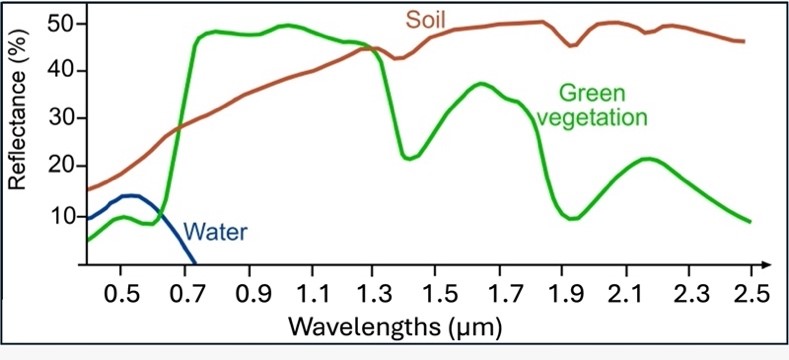
Open Access
Article
10 June 2025Influence of Surface Waves—Von Karman Street Interaction on Bottom Sediments Transport in the Vicinity of a Wind Turbine Mast: Experimental and Theoretical Study
Cylindrical structures used in offshore energy production systems are subjected to various stresses and loads (waves and currents). Understanding the interactions between these cylindrical structures and bedforms is critical, as rapid changes in the bathymetry can expose and damage pile foundations and cables. The impact of a vertical cylinder on a sandy sedimentary bottom subjected to hydrodynamic currents and surface waves is experimentally and theoretically studied. Tests were carried out at the wave flume where patterns are produced. It is observed that patterns emerge due to a subcritical instability at the water-sand interface at the bottom. The characteristics of these patterns can be explained using the Swift-Hohenberg equation. Finally, the experimental results will be applied to the numerical model using the Swift-Hohenberg equation.

Open Access
Article
06 June 2025Effects of Changing the Specific Surface Area in the Ceramic Matrix of CAC-Containing Refractory Castables on the Initial Stiffening and Setting Behaviour
Besides the coarse and medium grain size distribution, the matrix components play a central role in the performance of refractory castables. Practical experience shows that the particle size distribution (PSD) and the specific surface area of the ceramic matrix significantly influence processing, setting, and sintering behaviour. However, there is a lack of systematic studies on how PSD or specific surface area changes affect castable properties. This study aims to address this gap by varying ceramic matrices to create refractory model castables with different matrix surface areas. Three dispersing agents with different mechanisms (electrosteric and steric) were used at graded concentrations. Results show that castables with higher specific surface areas (using (very) finely ground and highly sintered alumina raw materials with high specific surface areas) and different dispersing agents and their concentrations show substantial differences in the initial stiffening and setting behaviour. Higher specific surface areas of the matrix result in an earlier first stiffening, while adding more dispersing agents leads to delayed stiffening. The refractory model castables’ first stiffening and hydration range (with a simultaneous temperature maximum) vary considerably depending on the dispersing agent used and its concentration, caused by completely different mechanisms.
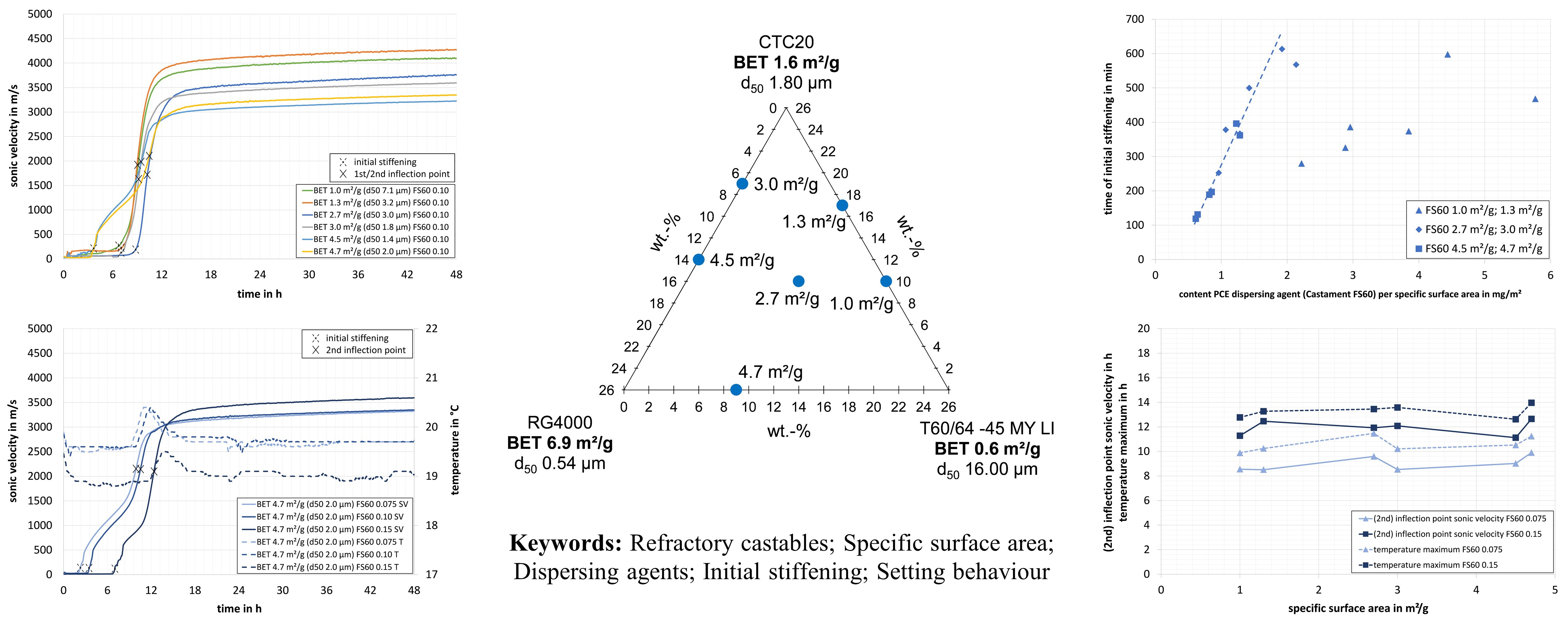
Open Access
Article
03 June 2025Optimization of High Energy Radiation-Induced Degradation of Sulfamethoxazole Using Response Surface Methodology
Ionizing irradiation is an emerging technology for the removal of toxic pollutants, such as antibiotics, in water and wastewater. In this study, gamma radiation-induced degradation of sulfamethoxazole (SMX) was optimized using response surface methodology (RSM) based on a Box-Behnken design. LC-MS analysis identified nine intermediate products (M1–M9), elucidating a dual oxidative-reductive degradation mechanism driven by hydroxyl radicals (•OH) and hydrated electrons (eaq⁻). These intermediates, characterized by hydroxylation, sulfonamide bond cleavage, and aromatic ring fragmentation, aligned with pathways distinct from conventional chlorination systems, underscoring the absence of toxic halogenated byproducts. According to experimental data, The study revealed that absorbed dose (0.2–2.0 kGy) and initial SMX concentration (5–40 mg/L) critically governed SMX degradation efficiency, achieving >99% removal under optimized conditions (≥1.2 kGy for 5–10 mg/L SMX). The robust RSM model (R2 = 0.9931) and experimental validation (±2% error) demonstrated the method’s reliability in reconciling nonlinear dose-concentration interactions as well as providing an effective approach to parameter optimization, offering practical insights for enhancing the treatment efficiency of antibiotic-containing wastewater.
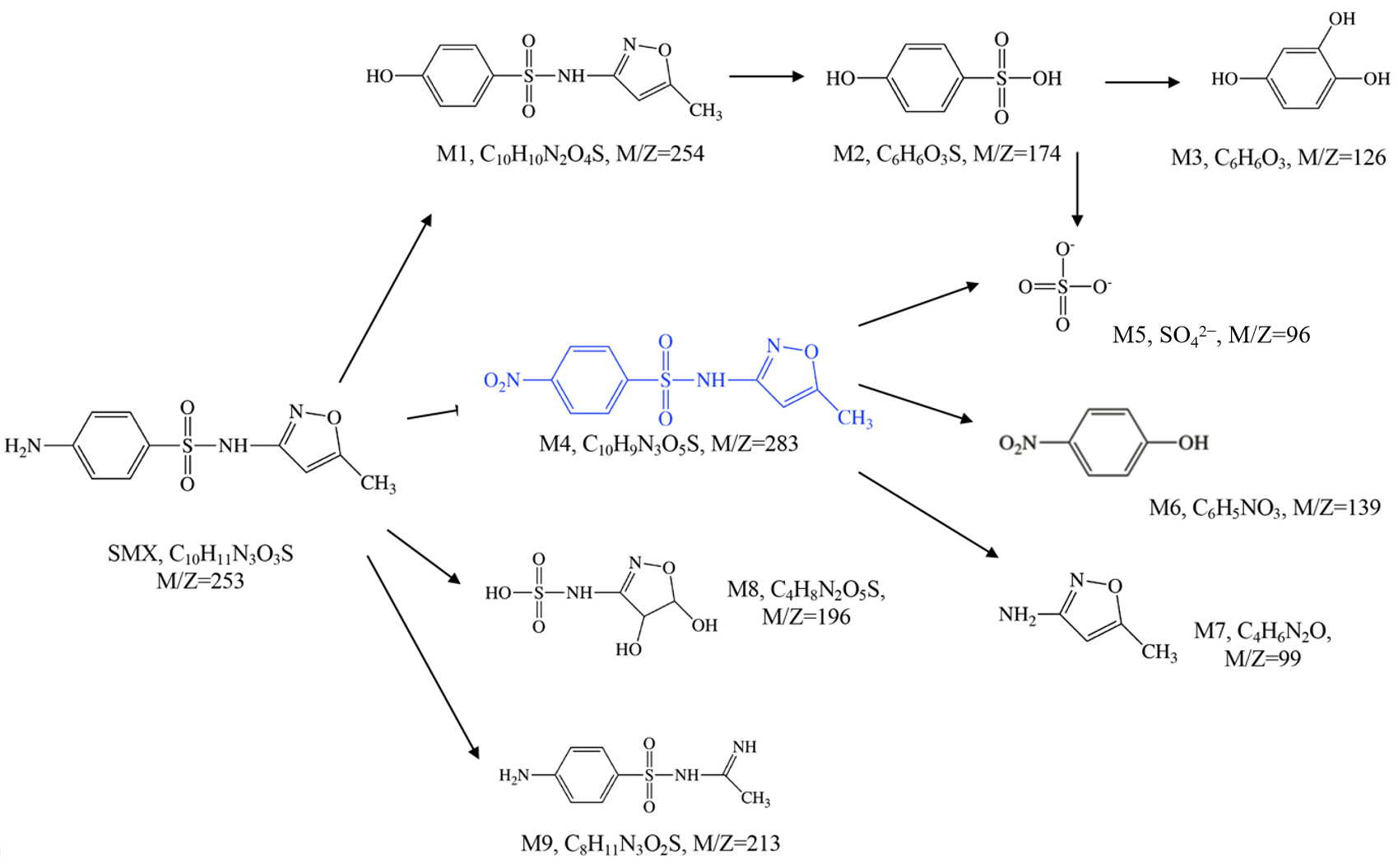
Open Access
Article
29 May 2025Hydrodynamic Performance and Energy Capture Characteristics of a Floating Inner Rotor Wave Energy Device
The development of efficient wave energy converters (WECs) is essential for harnessing marine renewable energy, particularly in regions with low wave energy flux. This study investigates a floating WEC with an internal eccentric rotor designed to enhance energy capture efficiency. The device consists of a floating body for wave energy absorption, an internal rotor for mechanical-to-hydraulic energy conversion, and a mooring system for stability. A numerical model was developed and validated against wave tank experiments, showing good agreement in peak values and amplitudes. Frequency-domain analysis examined the effects of structural parameters, draft, and center of gravity offset on hydrodynamic characteristics, while time-domain analysis evaluated the impact of rotor mass and power take-off (PTO) damping on energy capture. Multi-parameter optimization led to an improved structural design, increasing instantaneous power output by 150% and total power output by 108%. These findings provide a basis for further optimization of WECs in low-energy wave environments.
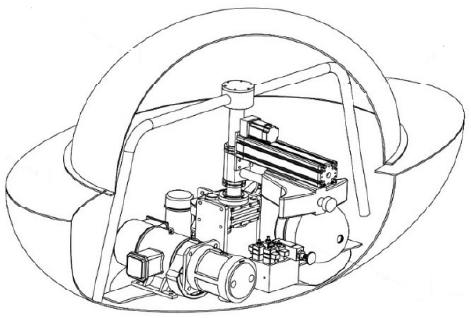
Open Access
Article
12 May 2025Drone Operation with Human Natural Movement
This study proposes a method for operating drones using natural human movements. The operator simply wears virtual reality (VR) goggles. An image from the drone camera was displayed on the goggles. When the operator changes the direction of his or her face, the drone changes the direction to match that of the operator. When the operator moves their head up or down, the drone rises or falls accordingly. When the operator walks in place, rather than walking, the drone moves forward. This allows the operator to control the drone as if they were walking in the air. Each of these movements was detected by the values of the acceleration and magnetic field sensors of the smartphone mounted on the VR goggles. A machine learning method was adopted to distinguish between walking and non-walking movements. Compared with operation via conventional remote control, it was observed that the remote controller performed better than the proposed approach in the early stages. However, when the participants familiarized themselves with the natural operation, these differences became relatively small. This study combined drones, VR, and machine learning. VR provides drone pilots with a sense of realism and immersion, whereas machine learning enables the use of natural movements.
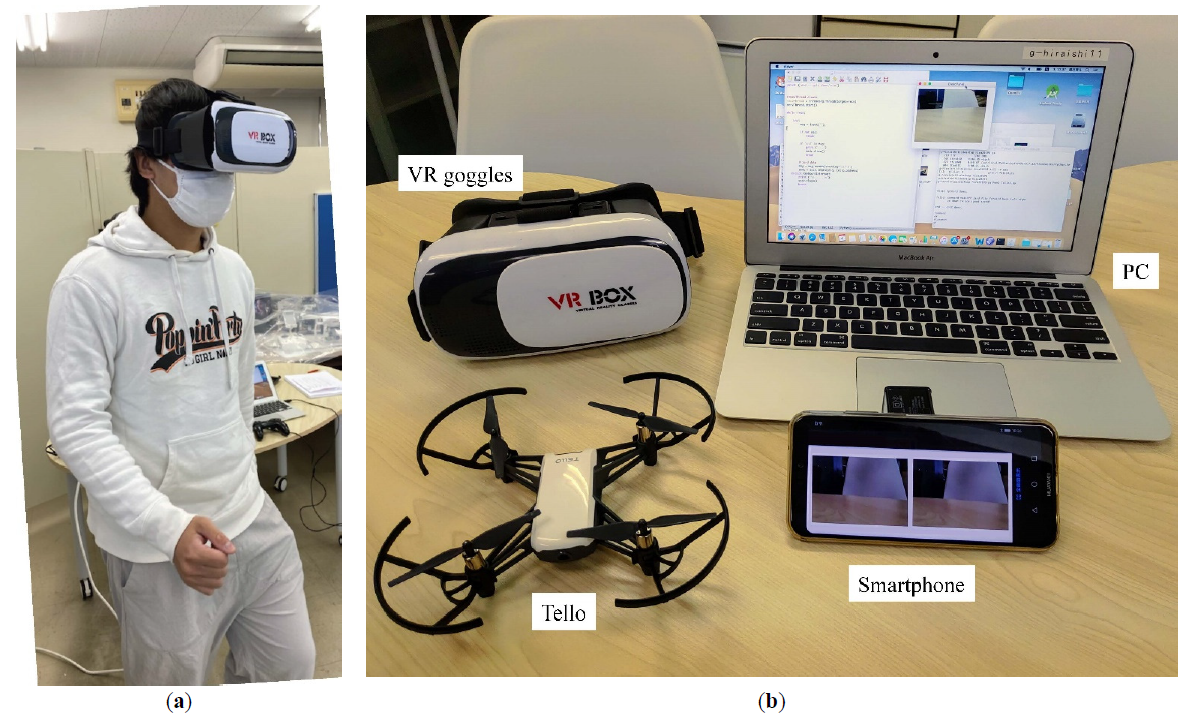
Open Access
Review
22 April 2025Counterfeit Drug Investigations: Techniques, Challenges, and the Role of Abductive Reasoning
Variable types of investigations exist regarding counterfeit drug detection, disruption, and regulation. Counterfeit drugs are spurious drugs, falsely labelled, falsified, substandard, unregistered/unlicensed, and infringe trademarks. Counterfeit drugs can mimic both legitimate and illegitimate drugs and are often distributed in virtual environments, such as illicit online pharmacies, the surface web, and the dark web. Counterfeit drug operators and operations are the typically corrupt and/or criminal individuals, groups, and techniques by which counterfeit drugs are produced and distributed. The manufacture and distribution of counterfeit drugs are ever-changing, which results in the need for investigative techniques that are equally adaptable and collaborative. Counterfeit drug investigations can be defined according to four categories: medical investigations in hospitals and through autopsies, chemical and non-chemical drug investigations in forensic toxicology laboratories, various track-and-trace technologies used in pharmaceutical industry investigations, and national and global coordinated investigations. Due to the diverse counterfeit drug investigations present, the logic and practice of abduction are highlighted as a primary part of the investigative element to counter ongoing efforts by offenders to evade detection. Abductive rationalities are prioritized in that they are contrary to an increasing reliance on technoscientific modes of data production alone. Rather, abductive reasoning plays a central role in counterfeit drug investigations at the levels of instigating and directing investigations, as well as interpreting and responding to evidential findings.

Open Access
Article
14 April 2025Efficient Extracellular Production of Phospholipase D in Escherichia coli via Genetic and Process Engineering Modification
Phospholipase D (PLD) is the key enzyme in the catalytic production of rare phospholipids including phosphatidylserine. It was considered a promising method via genetic manipulation for the heterologous production of PLD in the model chassis. Few works focused on the extracellular production of PLD in engineered microbes. Herein, genetic and process engineering modification strategies were developed to achieve secretory production of PLD in Escherichia coli. The N-terminal fusion secretion signal peptide OmpA and the plasmid pBAD-gⅢC with pBAD promoter were proven to be the most effective in promoting the secretory production of PLD. Given the limitation of the cell membrane, the regulation of the key protein expression in the cell membrane as well as the addition of surfactants, were explored to accelerate the secretory production of PLD further. It was indicated that adding 0.5% (w/v) Triton X-100 was more conducive to producing PLD. Finally, fed-batch fermentation was conducted, and the maximum extracellular PLD activity achieved was 33.25 U/mL, which was the highest level reported so far. Our work demonstrated the effectiveness of genetic and process engineering strategies for the secretory production of PLD in E. coli, which provided an alternative platform for the industrial production of PLD.
